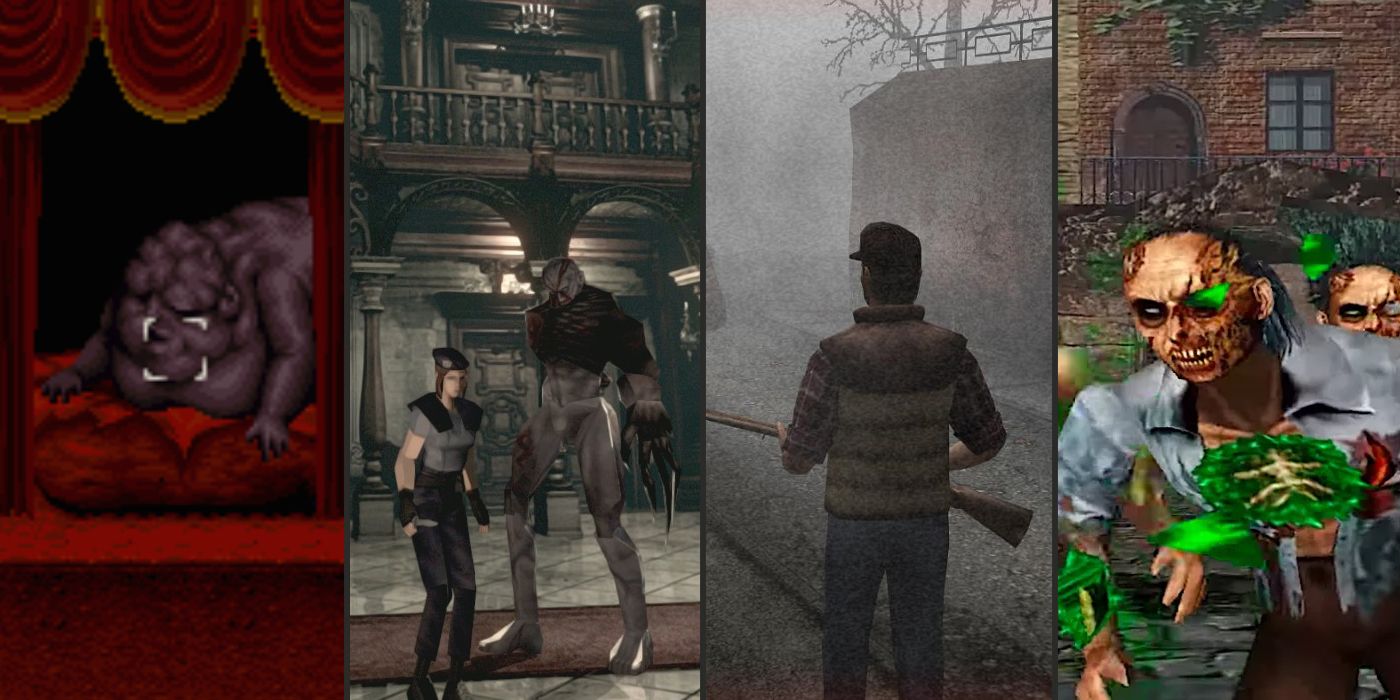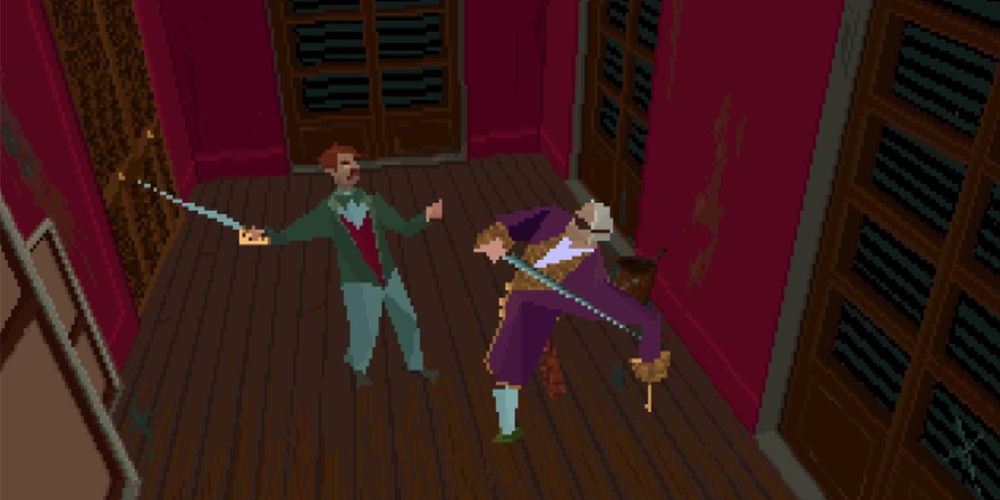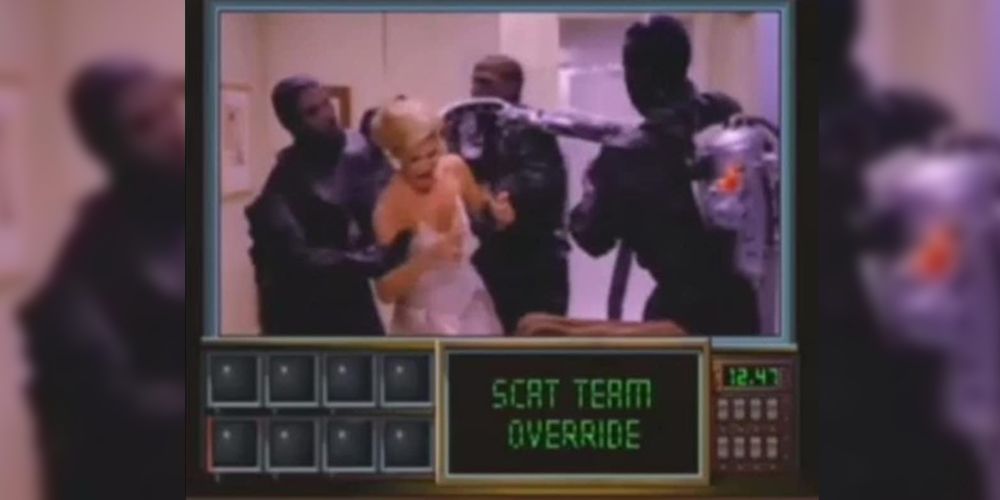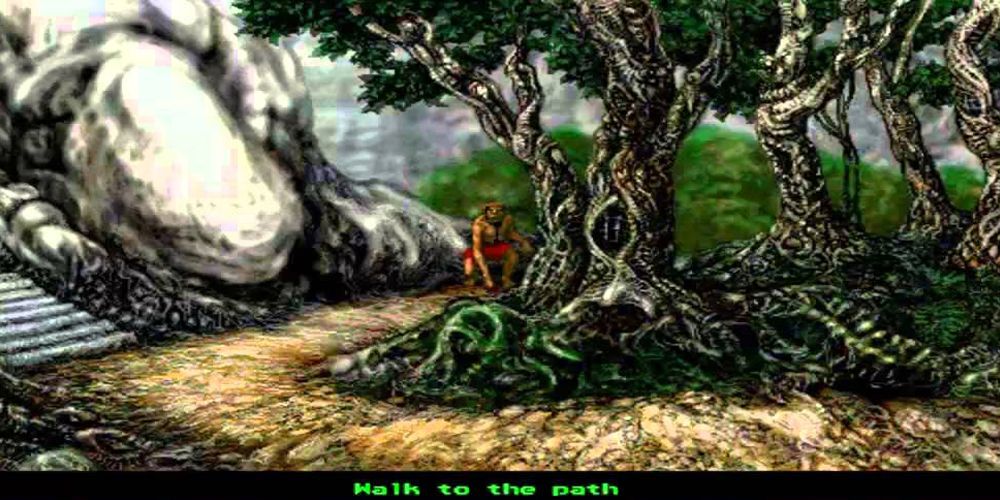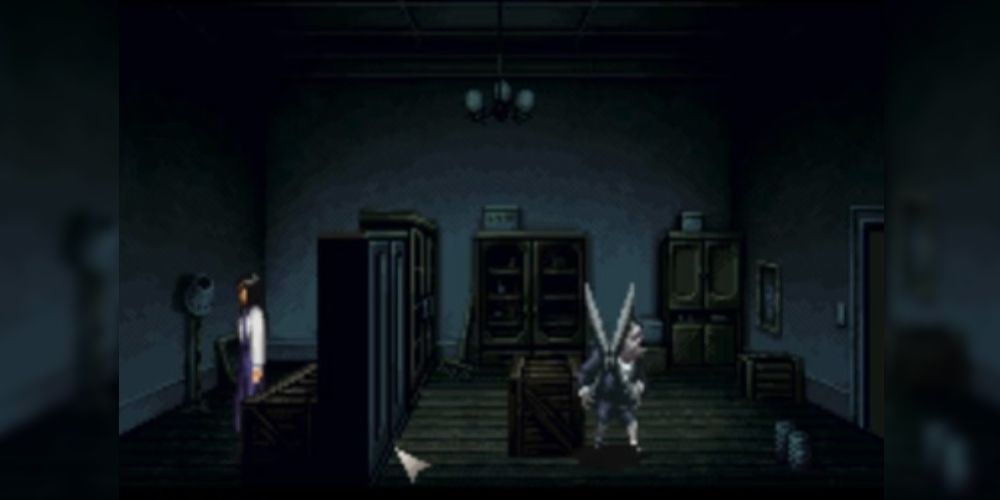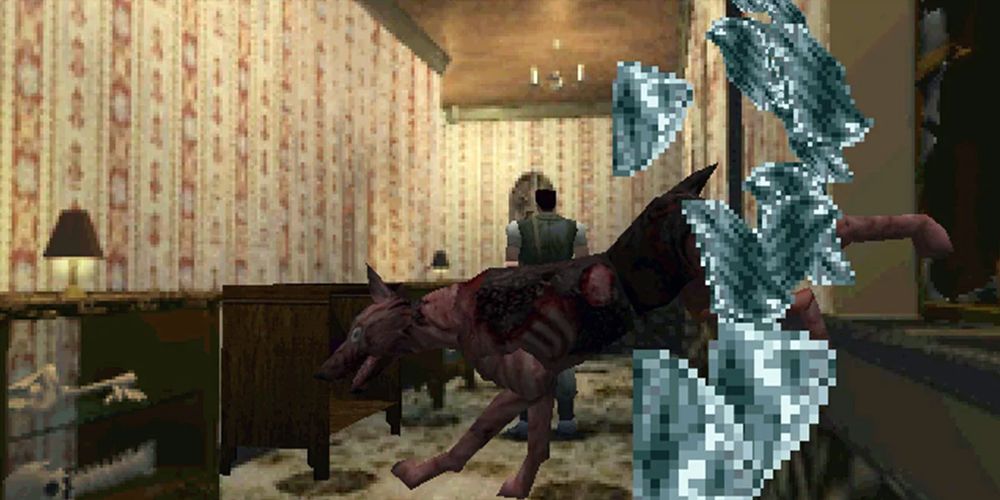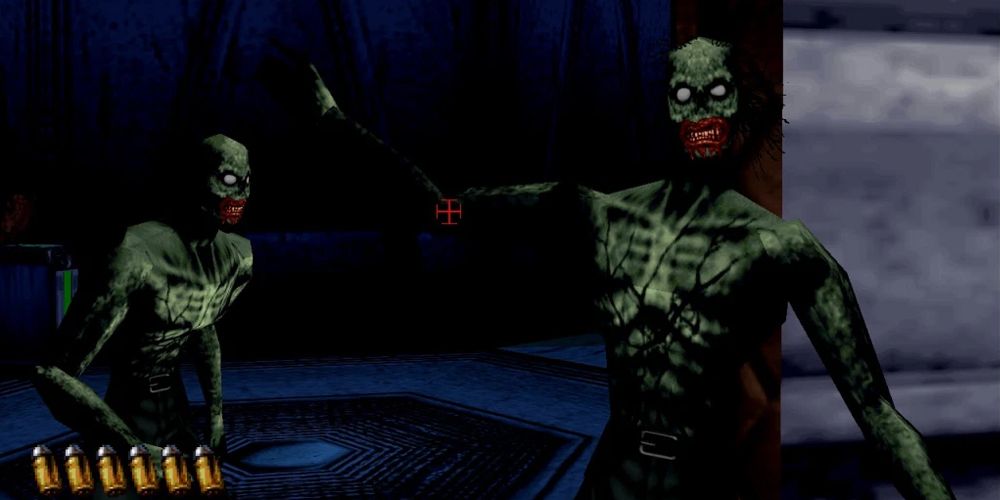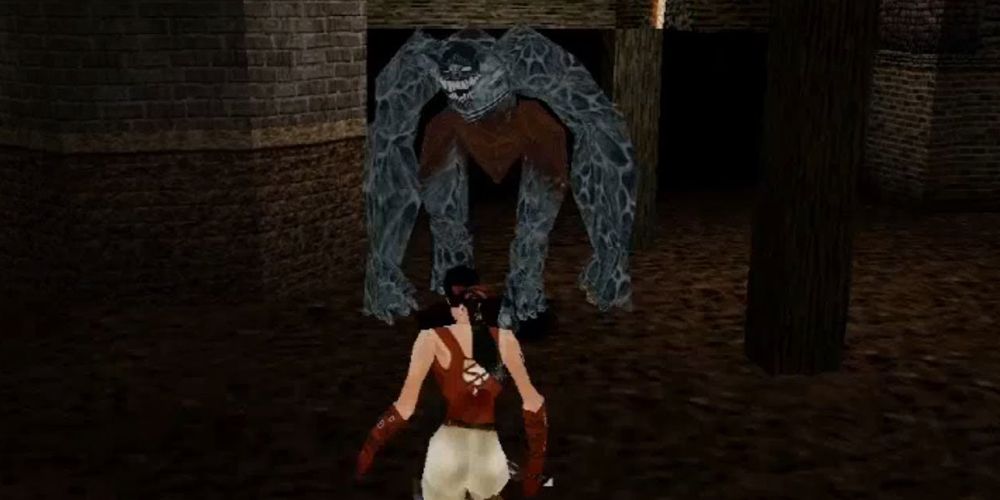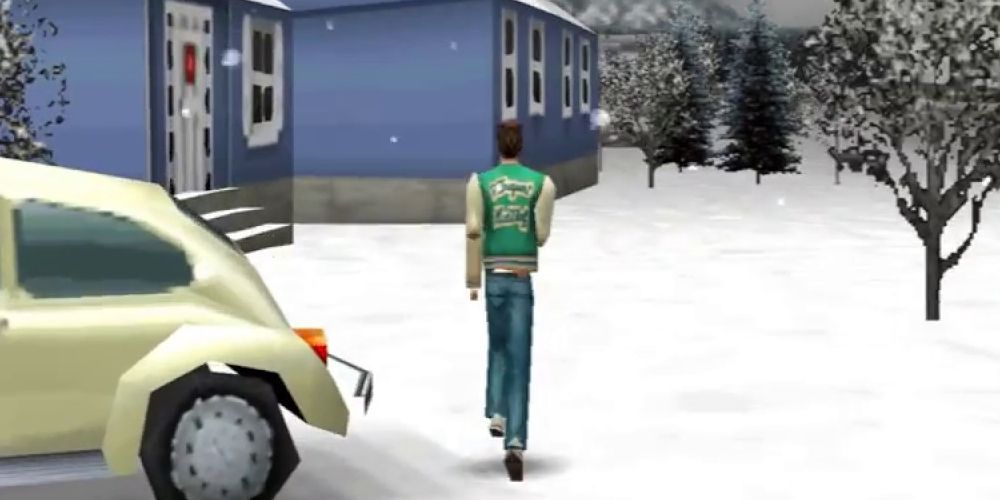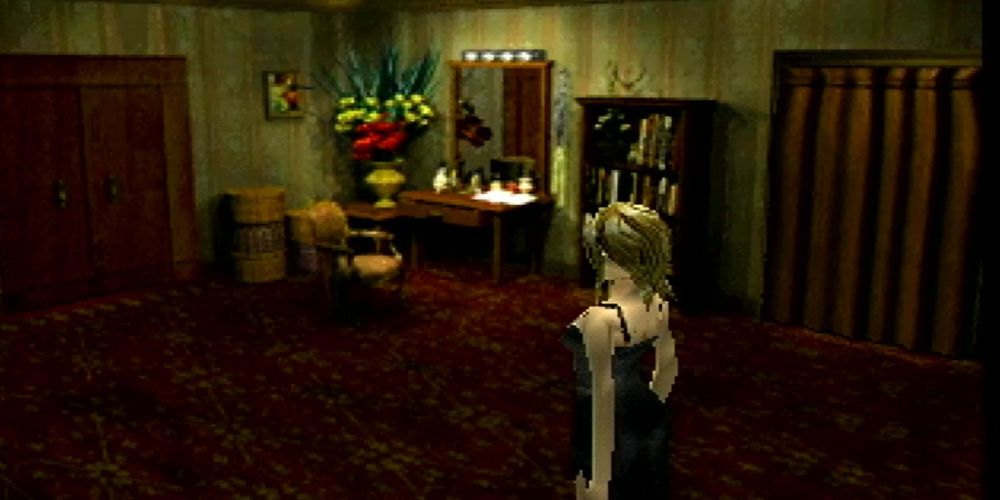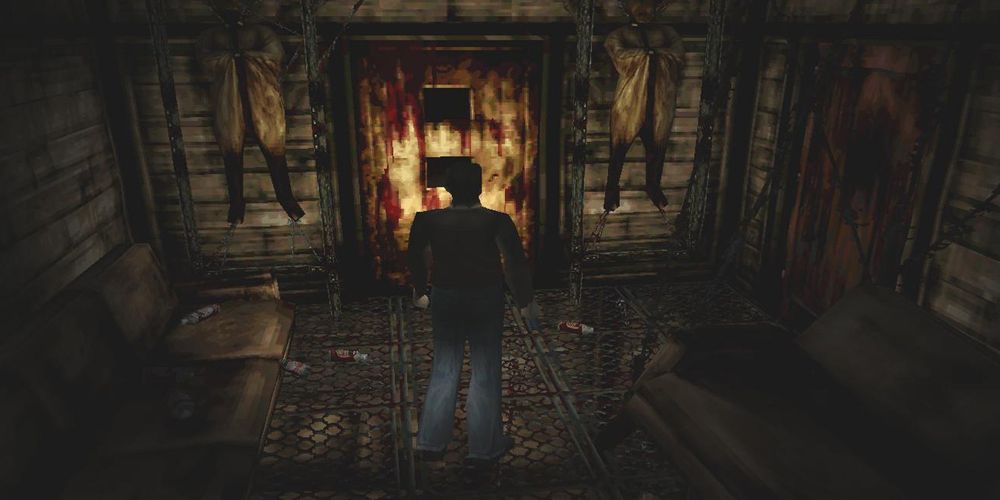Horror games come in many different shapes and sizes. Some seek to shock unsuspecting players with jump scares while others instead focus on instilling feelings of dread through intricate worldbuilding and atmosphere. Given the huge variety of techniques, there really is something for just about everyone.
While these days there is an established formula, back in the '90s, it was something of a free for all. Developers played around with many interesting mechanics in their search for that perfect spine-tingling experience. Needless to say, some provided better results than others. While most of these games and series have faded away into obscurity, many of those ideas still live on today.
10 Alone In The Dark (1992)
Considered by many to be the first 3D survival horror game ever made, Alone in the Dark played an instrumental role in establishing and developing the genre. The game takes place in an old mansion and requires players to escape from the building while dealing with zombies and other supernatural creatures.
Players are given the choice between a male and a female protagonist and also have options when it comes to how they defeat enemies. While they can be tackled head-on with fists or weapons, it's often possible to kill or pass them through puzzle-solving instead. Inventory capacity is also determined by weight rather than the number of objects, which provides a lot more realism than other '90s games.
9 Night Trap (1992)
Night Trap is one of the most controversial video games ever made. Along with Mortal Kombat, it prompted a US Senate hearing on video game violence that would ultimately lead to the foundation of the ESRB. In the game, players control a member of the Sega Control Attack Team (perhaps one of the most unfortunate acronyms in gaming) and must protect a group of teenage girls during a sleepover.
In order to do this, players must monitor live feeds of cameras set up around the house and trigger traps in order to prevent the girls from being harmed. This is not too dissimilar from the mechanics found in the Five Nights at Freddy's series, which came out more than two decades later. The game also uses live-action footage for narrative purposes, something that would later be used in games such as Metal Gear Solid 2.
8 I Have No Mouth, And I Must Scream (1995)
Based on the 1967 short story of the same name, I Have No Mouth, and I Must Scream takes place in a dystopian future where AI has taken over the world and killed all but five humans. These unfortunate people have been kept alive and tortured for more than a century. Now, it's up to the player to point and click their way to freedom.
The game tackles some incredibly dark subjects that weren't typically found in video games at that time and the way that the narrative unfolds is dictated by the player's actions and choices. It also features multiple endings, which again, was not something that was too prevalent in '90s video games.
7 Clock Tower (1995)
Clock Tower is a little more on the nose when it comes to point and click horror, but this makes for a much scarier experience. The sound design is excellent, usually relying entirely on ambient noises to build tension before unleashing its excellent soundtrack just as anxiety reaches its peak. Together with the game's strong visuals, this makes it one of the most atmospheric horror games on the SNES.
Like many of the survival horror games that followed it, Clock Tower places a big emphasis on puzzle-solving and also features multiple endings. Items are randomly placed around the map for replayability and there's a stamina system too. Its most interesting mechanic, however, is "panic mode," wherein the playable character will control differently after encountering a threat.
6 Resident Evil (1996)
While earlier games may have done a lot of the leg-work when it came to establishing and defining the survival horror genre, it was Resident Evil that brought it into the mainstream. The game has spawned countless sequels, remakes, and spinoffs which together have sold more than 100 million copies. When it comes to survival horror, they really don't come any bigger than Resident Evil.
Although they were featured in several other games prior to Resident Evil's release, many attribute the game with having popularized the use of tank controls for 3D gaming. Resident Evil's use of prerendered backgrounds was also revolutionary for the era, as were its infamous fixed camera angles. All three of these things would become staples of not just the genre, but also gaming in general for several years to come.
5 The House Of The Dead (1996)
Light gun games were incredibly popular during the '90s and The House of the Dead is up there with the very best. Terrible voice acting aside, it provides players with an experience that is both entertaining and frantic. Better still, unlike most other light gun games, The House of the Dead wasn't just limited to arcades.
The game features multiple routes, with the player's actions (or lack thereof) having a direct impact on where they are taken next. These routes influence the game's climax too, with three different endings available. Unlike many of the horror games that came before it, it's also possible to shoot off an enemy's limbs depending on where the player aims.
4 Nightmare Creatures (1997)
On the surface, Nightmare Creatures is a fairly typical survival horror game, but there are a few interesting ideas that really help it to stand out. It offers dual protagonists, secondary weapons, and even the ability to use magic. One of its most interesting mechanics, though, is the adrenaline meter.
The meter is constantly draining but can be replenished by killing an enemy. If the meter is allowed to empty, the player will begin to take damage, thus forcing them to seek out another enemy in order to remain alive. The game's sequel did away with this mechanic, however, replacing it with a Mortal Kombat style fatality system.
3 Mizzurna Falls (1998)
Anybody who is a fan of the early works of David Lynch will feel right at home in Mizzurna Falls. The game is dripping with Twin Peaks vibes and includes a fairly sizeable open world in which to explore. Sadly, however, the game never received a Western release and so those hoping to play it will need to rely on fan translations. It's definitely worth a look though.
The game features many elements that would not become common in gaming for quite some time. Much like Yu Suzuki's Shenmue games, each NPC has their own daily routine and there is a scripted weather cycle as well. Players must also complete the game within a certain number of days, an idea that Majora's Mask would so famously implement just two years later.
2 Parasite Eve (1998)
Square's take on survival horror was an incredibly interesting one. Parasite Eve features prerendered backgrounds and a daunting soundtrack to create an incredibly sinister atmosphere. It backs this up with some very solid gameplay. The story is interesting, the protagonist is memorable, and some of the monsters are seriously disturbing too.
Unlike similar games, Parasite Eve's combat uses an ATB system while still allowing the player to move around as they wait for the bar to charge. In many ways, this served as a precursor for the systems used in some of the more recent Final Fantasy games, albeit an incredibly rudimentary one. Parasite Eve also has a New Game Plus mode which adds an additional building that contains the game's true final boss.
1 Silent Hill (1999)
With Square and Capcom already throwing their hats into the survival horror ring, it was perhaps inevitable that Konami would eventually follow suit. Thankfully, this was the Konami of old and so what they delivered was truly fantastic. So much so, in fact, that more than two decades later, fans of the series are still hoping for a new Silent Hill game.
Aside from its wonderful atmosphere and strong storytelling, one thing that makes Silent Hill stand out is its lack of a HUD. This forces players to trust their instincts while also making the experience a lot more immersive. Those playing with a dual shock controller also get heartbeat style vibrations to notify them when their health is low. Another nice touch is the game's maps, which can only be read when there is sufficient light in the immediate area.

